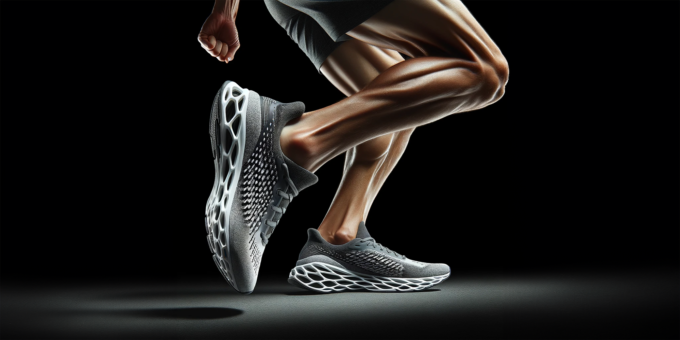AI for safer bike helmets and better shoe soles
Researchers at ETH have trained an artificial intelligence in such a way that it can design the structure of so-called metamaterials with the desired mechanical properties for various applications.
Cycling helmets that absorb the energy of an impact, running shoes that give every step an extra boost, or implants that imitate the properties of bone. Metamaterials make such applications possible. Their internal structure is the result of a careful design process, after which 3D printers can produce the generated structures with optimized properties. Researchers led by Dennis Kochmann, Professor of Mechanics and Materials Research at the Department of Mechanical and Process Engineering at ETH Zurich, have developed novel AI tools. These bypass the time-consuming and intuition-based design process of metamaterials and instead predict structures with exceptional properties quickly and automatically. A novelty is that these tools can also be used for large (so-called non-linear) loads, for example when a helmet absorbs large forces in the event of an impact.
Kochmann's team is one of the pioneers in the development of small cellular structures (comparable to the beams in half-timbered houses) to create metamaterials with special properties. "For example, we design metamaterials that behave like liquids: difficult to compress but easy to deform. Or metamaterials that shrink in all directions when they are compressed in one direction," explains Kochmann.
Efficient, optimal material design

The design possibilities seem endless. However, the full potential of metamaterials has not yet been fully exploited by science, as the design process is often based on experience and trial and error. In addition, small adjustments to the structure can lead to major changes in properties.
In their latest work, the ETH researchers used AI to systematically explore the numerous designs and mechanical properties of two types of metamaterial. Their calculation tools can predict optimal structures for desired deformations at the touch of a button. To do this, the researchers used large data sets of the deformation behavior of real structures. They used these to train an AI model that not only reproduces the data, but can also generate and optimize new structures. By using a method known as "variational autoencoder", the AI learns the essential characteristics of a structure from the large number of design parameters and how they lead to certain properties. It then uses this knowledge to create a metamaterial design once the researchers specify the desired properties and requirements.
Great advantages for bike helmets and shoe soles
The ETH scientists have made their AI tools freely available to researchers in the field of metamaterials. This will hopefully lead to the design of many new and unusual materials. The tools open up new avenues for the development of protective equipment such as bicycle helmets and for other applications of metamaterials, from medical technology to soft robots. Even shoe soles can be designed to better absorb shocks when walking or provide a forward thrust when stepping. Will AI completely replace the manual development of materials? "No," laughs Kochmann. "Used well, AI can be a highly efficient and hard-working helper, but you have to give it the right instructions and train it properly - and that requires scientific foundations and engineering know-how."
Source: ETH









